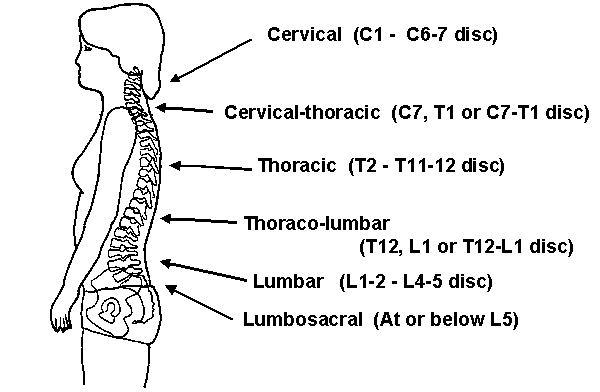
Use your abdominal muscles to pull your belly button down toward your spine.core strength, since the muscles in your abdomen help keep the spine stableĬore-strengthening exercises, which are critical to spine health, can be done at home.When exercising with thoracic spondylosis, remember to follow the guidance of your doctor or physical therapist and to stop if you experience pain. You may benefit most from having physical therapy, in which you’ll learn the proper technique for spine-friendly exercises. You can begin exercises that stretch and strengthen your back as soon as your doctor gives you the go-ahead. You may come from a family in which vertebral bone is thinner.
#Thoracolumbar spine crack#
Even a very small crack in the pars can cause spondylosis.įor young people with vertebrae that’re still growing and developing, trauma from a football tackle or stress from a gymnastics routine can lead to spondylosis. The pars joins the two facet joints on the back of a vertebra. The part of a vertebra most commonly associated with spondylosis is a section called the pars interarticularis. Osteoporosis, a bone-thinning condition also associated with age, may contribute to stress fractures in the vertebrae. The cause of spondylosis may actually be a combination of heavy lifting and an active lifestyle. When one part of your back experiences problems, the rest of your spine is at greater risk of trouble.įor older adults, the day-to-day stress on the spine simply adds up over time. Even relatively healthy people can experience some disc degeneration.īecause you put less burden on your thoracic spine than the other parts of your back, thoracic spondylosis usually develops because there has been cervical or lumbar spondylosis first. With every passing year, your odds of developing some form of spondylosis increase. Thoracic spondylosis is often an age-related medical condition. Check out these exercises to relieve the pain. This painful condition is often referred to as a pinched nerve. You can also experience muscle weakness in your arms and legs, as well as trouble walking.Īnother complication of spondylosis is spondylolisthesis, in which a vertebra slips forward and onto the bone below it and squeezes a nerve. Pain can get worse with activity but improve with rest. Spondylosis in any part of your back, including the thoracic section, can cause pain to radiate downward into the legs. But a lump of tissue can press against spinal nerves, triggering pain or other symptoms. For example, tissue can form a lump around a stress fracture to help heal the bone. When pain is involved, it’s often because changes in the discs are causing one or more of them to press on nerves that extend from the spinal canal. When it does, you tend to feel stiff or sore or both. Thoracic spondylosis doesn’t always lead to noticeable symptoms. Children and teens may be especially vulnerable to this problem, because their bones are still developing. Spondylosis in any part of your back can also result from a sports injury that causes a small fracture in a vertebra. Thoracic spondylosis is less common than lumbar or cervical spondylosis. The cervical part of the spine is the upper section that includes the neck. Your spine includes two more sections on the top and bottom of the thoracic region.

The thoracic portion of your spine refers to the middle of your back. When these changes develop in the middle of your spine, the condition is known as thoracic spondylosis. The ligaments that connect your bones can grow thicker and less flexible. Time can also cause the cartilage, the cushion between your bones, to grow thinner. Wear and tear on any bone can cause a stress fracture. You don’t have to have an injury, such as a fall, for this to happen. As you get older, your vertebrae (spinal bones) tend to wear down.


 0 kommentar(er)
0 kommentar(er)
